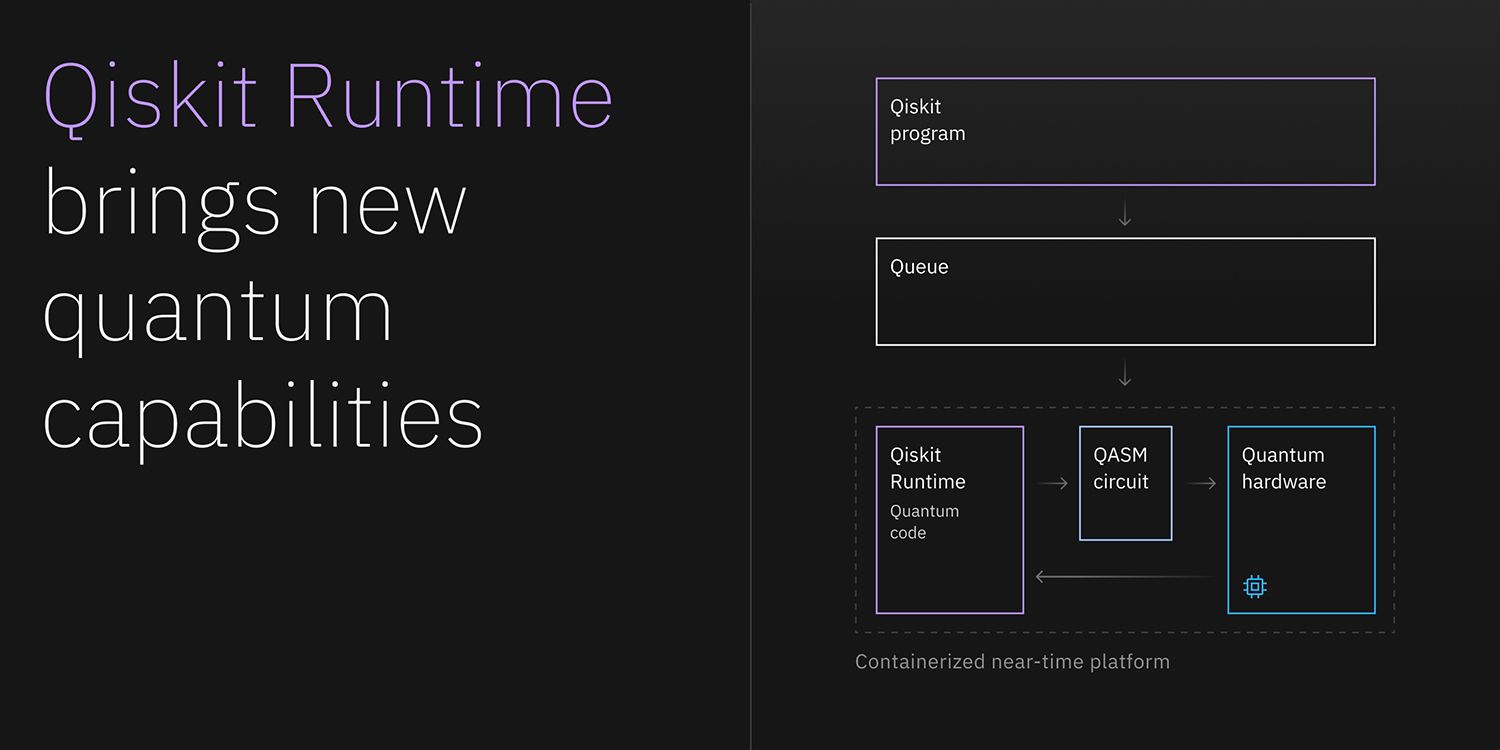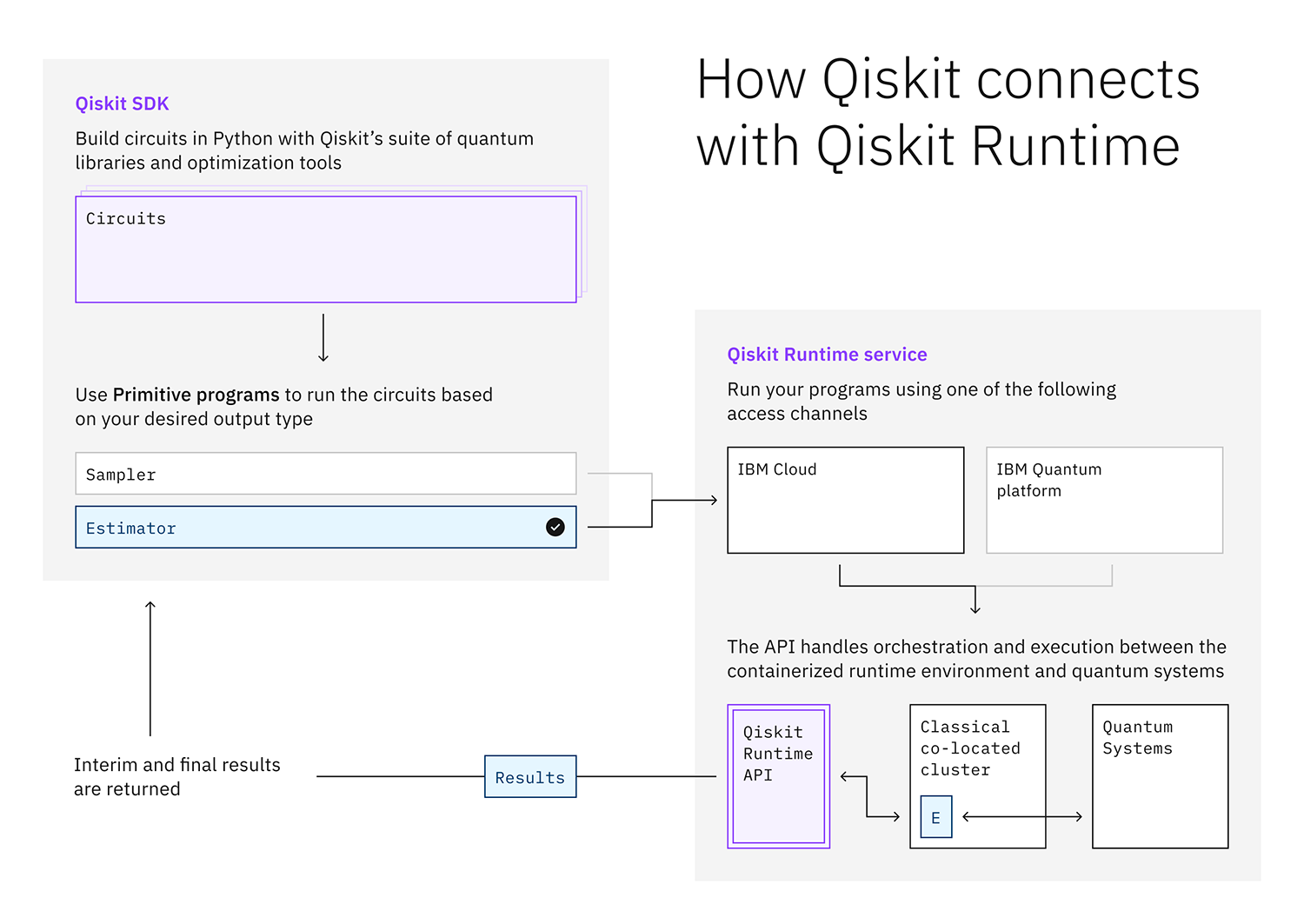Ready to take one step closer to frictionless quantum computing? Try Qiskit Runtime, today.
As quantum computing matures, developers will need more than the best quantum hardware. They’ll need a programming and execution model for quantum programs. It will have to be fast, efficient, easy to use, and scalable. We are building the Qiskit Runtime primitives to fulfill this need.
When we first made Qiskit Runtime
What is Qiskit Runtime? Find out more.
In particular, we removed lengthy communication trips back-and-forth to users' computers. Programs executed in Qiskit Runtime therefore ran more efficiently, allowing users to spend less time waiting in queues, run more circuits in a day, and get their results more quickly. Thanks in part to these changes, we saw up to a 120X speedup
In May of 2021, IBM Quantum delivered 120x speedup of quantum workloads with Qiskit Runtime. Read more.

We now see an opportunity to leverage this same infrastructure to further simplify the developer experience and at the same time lay the foundation for improved performance. We are doing this via Qiskit Runtime primitives.
The core capability of quantum computers that sets them apart from from classical computers is their ability to generate non-classical probability distributions at their outputs. The native operations that one can do with a probability distribution is to sample from it or to estimate quantities on it. Consequently, these operations of sampling and estimating form the fundamental building blocks of quantum algorithm development.
Our first two Qiskit Runtime primitives directly expose these sampling and estimating operations as core interfaces to our quantum systems via the Sampler and Estimator, respectively.
The Sampler
The Sampler estimates the entire quasi-probability distribution at the output of a quantum circuit by sampling from its output. This is useful for search algorithms like Grover’s search.
The Estimator
The Estimator calculates expectation values of observables at the output of a circuit. Such observables can encode a large variety of things such as the electronic structure of a molecule, the cost function for an optimization problem, the kernel of a machine learning problem, and much more.
When developers use either of these primitives, they would like to simultaneously express their operational need; i.e. the developer may need to know an expectation value with a particular target accuracy, or with a maximum execution time. These are different goals than trying to control low-level details such as the number of repeated executions (“shots”) or the particular error mitigation method used to deliver the target accuracy.
By elevating these operations to the core interface to IBM Quantum hardware, we are also laying the foundation for allowing users to express their need in terms relevant to their use case.

Workflow: How Qiskit connects to Qiskit Runtime.
A new way of executing your programs on powerful quantum systems
IBM has led the way in cloud-based quantum computing since 2016, when we first made a quantum processor available on the IBM Quantum platform, hosted by IBM Cloud
Read more about making quantum a pay-as-you-go cloud service on the IBM Cloud blog.
We made two 27-qubit systems available to pay-as-you-go plan users at a rate of $1.60 per runtime second.
Our new pay-as-you-go plan
Strangeworks has also announced that it is the first IBM business partner to offer consumption-based pricing access to select IBM Quantum systems through pay-as-you-go pricing model for Qiskit Runtime. Read more.
Where all this is headed
The programming and execution model for the next phase of quantum computing needs to be fast, efficient, easy to use, and scalable.
The Qiskit Runtime primitives deliver an experience that is already faster, more efficient, and better matched to the needs of algorithm developers than any comparable quantum service. With today’s launch of integrated IBM Cloud access, some of our most advanced systems are accessible to a broader group of developers than ever before. But the final important benefit of putting Qiskit Runtime primitives integrated into IBM Cloud is scalability.
The efficiency and speed gains of the Qiskit Runtime are themselves scalable. As we introduce new optimizations to the platform, programs will run faster with less effort from developers. Over time, we will introduce tools such as error suppression and mitigation into the service, further enhancing its power.
We see larger gains in the future with a serverless development model
In 2021, IBM introduced Quantum Serverless, a new programming model for leveraging quantum and classical resources. Read more.
A future is coming where developers will identify problems that require quantum solutions, quickly and easily create programs to solve them, and seamlessly execute those programs without any need for hardware configuration. By following our roadmap — and with the help of Qiskit Runtime — we hope to bring about this frictionless quantum future.
Ready to take one step closer to frictionless quantum computing? Try Qiskit Runtime, today.




